How to Care for Active Dogs
Written by Pompassador @sofietjemsland / Cover photo: Vilde Lyngås
I guess it’s safe to say that all of us want our dogs to live a long, happy, active and healthy life. When our dogs are living an active life, and by active I mean for example regularly go for longer hikes, hunting, agility, obedience, flyball or other kinds of dog sports, we do have an extra responsibility to take good care of our dogs and to prevent injuries. I have chosen some topics I think are important to talk about. And before we jump into it I would like to add that many of these topics are relevant to most dogs, even if they are not active in sports.
CONTENTS:
1. Warm Up & Cool Down
2. Strength and Coordination Training
3. Checkups
4. Food
5. Supplements
6. Everyday Life
7. Health tests
1. Warm Up & Cool Down
I’m pretty sure I’m not the only one who could do a much better job when it comes to warming up and cooling down my dogs. But why should we warm up our dogs? The most important reason is to reduce the risk of injury, at the same time you will also prepare your dog mentally and physically for the activity you are about to do. A warm up will increase your dog’s heart rate and blood flow, which enables more oxygen to reach the muscles. It will also activate the connections between the nerves and muscles, this will improve the efficiency of the movement. If you don’t warm up your dog properly, it can easily strain something or tear a muscle.
There isn’t just one way to do your warm up, but i would like to share an example of how it can be done. You can start with 10-15 minutes of walking, it’s a great way to increase the blood stream. After that you can follow by doing different tricks your dog knows for about 5 minutes. It can for example be sit, down, stand, sit pretty and heeling. By doing tricks you will activate different parts of the dog’s body, and at the same time work on coordination. In the end I like to use 2-3 minutes to work on one jump with different verbal cues to make sure my dog has to use his brain, but also to add a little more speed at the end of the warm up. But of course, you have to adjust it to your own dog and their needs.
After training it’s recommended to end with a cool down. This is to gradually reduce the heart rate and body temperature, and will help begin the process of recovery. A cool down can be a 10-15 minutes walk and stretching. I got stretching exercises from my dog’s physio, you can read more about that in the topic “Checkups”.
2. Strength and Coordination Training
I think this must be one of my favorite topics, there is just so much fun you can do together with your dog. Strength and coordination training is a great way to create a stronger bond between you and your dog, and at the same time it’s a great way to reduce the risk of injury in dog sports. A strong body is better equipped to handle the stress on their body. Even dogs that are not used in any type of dog sport will benefit from strength training in everyday life. When training strength with my dogs, I also do different exercises for body awareness. I want my dogs to have a good understanding of where they place their feet instead of just letting the hind legs “follow” the rest of the body when moving.
But where do we start? First of all you should definitely take a seminar to avoid injuring your dog by making mistakes or overtraining your dog. If there aren’t any in-person seminars close to you, there are many great people you can help you with online courses. I can for example highly recommend @canineapex on instagram, he must be one of the biggest nerds i know in the dog world when it comes to this.
I would also like to add a few tips:
- Remember to give your dog breaks, there is no need to train strength or coordination every single day. Personally I train 1-3 times a week.
- Variation is key: Keeps the training fun, and there will be less chance for overloading the specific muscle groups.
- Focus on rewarding your dog and having fun together.
Cavalettis is one of my favorite exercises and is something I add to almost every strength training, and is a great exercise for most dogs. Cavalettis will help to improve both your dog’s strength and coordination, it will teach a balanced trot, improve core strength and overall movement. There are different types of cavalettis so it can be a good idea to get help from someone in the beginning. The height should never be higher than your dog’s ankle height when doing cavalettis. The distance between the cavalettis needs to be adjusted to your dog, for my dog i use a distance that is equal to the height of my dog’s elbow.
The exercises you choose for your dog should be adjusted after your dog’s needs. I get help from my dog’s physio to find their weaknesses. I have added some videos of my dogs doing different strength and coordination exercises for inspiration:
3. Rest Days and Recovery
I give my dogs a rest day now and then for them to physically and mentally recharge, I would say that i give my dogs a rest day something around every 10-14 days. But this also depends on how our last week has been like. If we for example have had a few days with longer hikes and agility training i like to give them a rest day to recover. On their rest day they get a maximum of 30 minutes of steady state walking/trotting (no mountain hike for example) as an active recovery day. I want the activity to have a slow pace and not increase their heart rate too much.
If you don’t let their body’s get the time to recover, it will be difficult for the body to repair and rebuild. Rest days will help the muscles to rebuild and fill up their energy stores. If you don’t allow your dogs to recover, your dog can experience a decrease in power, strength, speed and endurance. Over time, this can lead to an increased risk of injury due to overtraining. By giving your dog a rest day now and then you can help them rebuild this instead.
4. Checkups
My dogs get checkups regularly, simply because dogs can easily hide pain and it can be hard for us to see. By having my dogs checked regularly, I can more easily prevent something small from developing into a bigger problem. And of course i don’t want my dogs to have any pain without me knowing, by knowing i can help them by visiting my physio.
When my dog’s get their checkups at our physio, she is also treating them where needed. Normally my dogs get a combination of laser treatment and massage, but it always depends on what they need. I also get tips on how to stretch them according to their needs, and also what kind of strength exercises I should focus on.
Massage can help the muscles relax and release tense areas, and will also increase circulation. When you massage, there will be an increase in heat in the muscles because the blood vessels dilate, which causes the blood to flow faster through the muscle. A good circulation will help your dog’s muscles take up nutrients more easily, which leads to less waste substances and connective tissue accumulations. A massage will also help us to identify any trouble spots, and will help us release tension in muscles, tendons, ligaments and joints.
LLLT (Low Level Laser Therapy) will help the cells to repair themselves faster than normal. Laser can be used to treat a variety of conditions, a few examples can be muscle injuries, wound healing, stiffness and muscle soreness, inflammation etc. LLLT means that the laser has a low amount of energy, which means that it does not have the ability to burn or cut like high energy lasers can. Treatment with the LLLT laser is painless and not harmful.
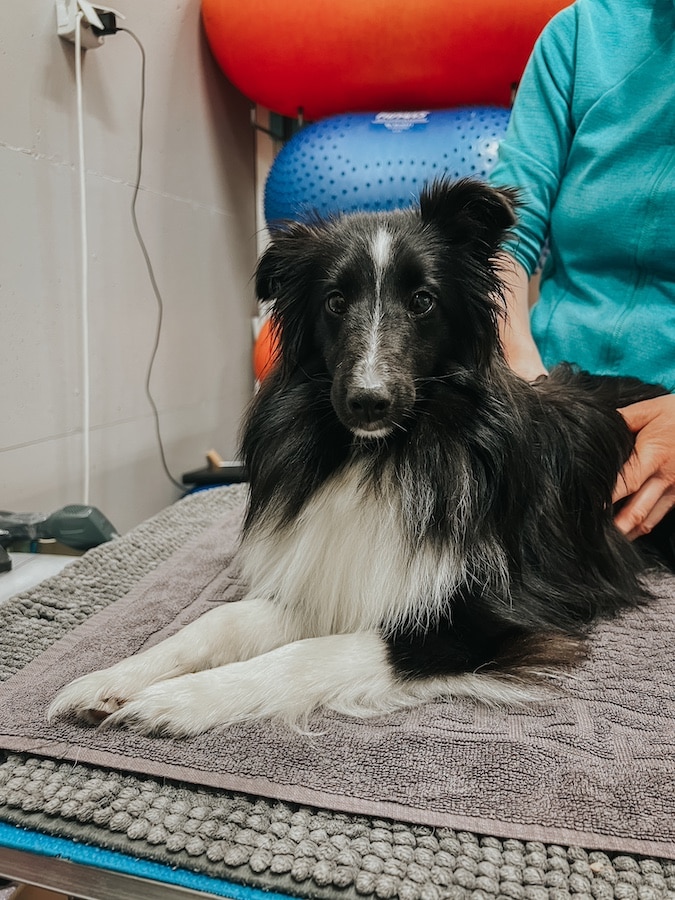
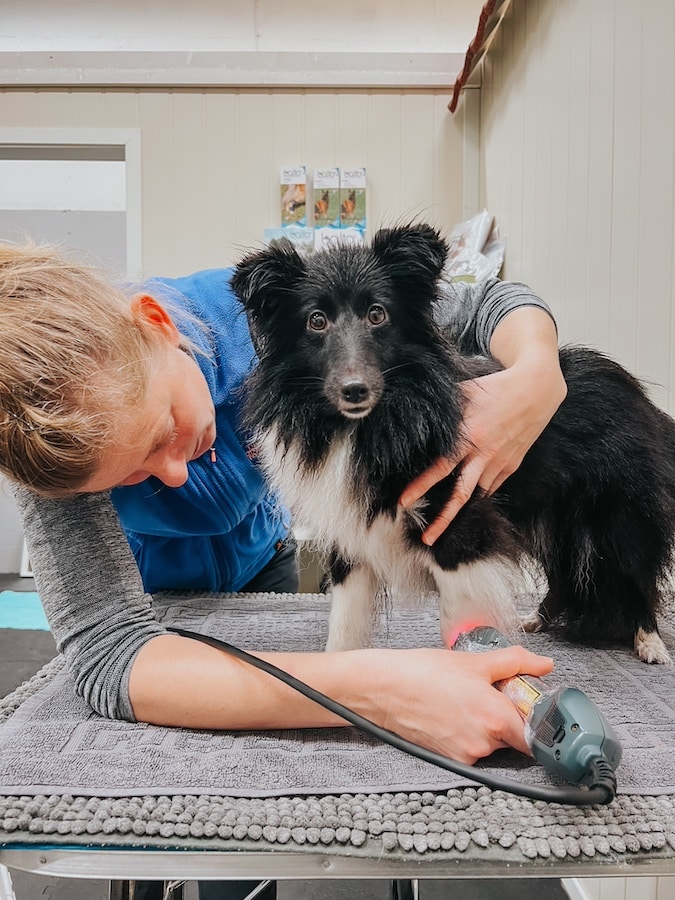
5. Food
Food is another topic I could talk forever about. I’m not going to mention specific brands since this post isn’t made to advertise or to talk negatively of specific brands. On the other hand, we can talk about the ingredient list. I have added two examples (both dry food) I’m going to comment on. Before we start I will clarify that the ingredients are listed in descending order of weight.
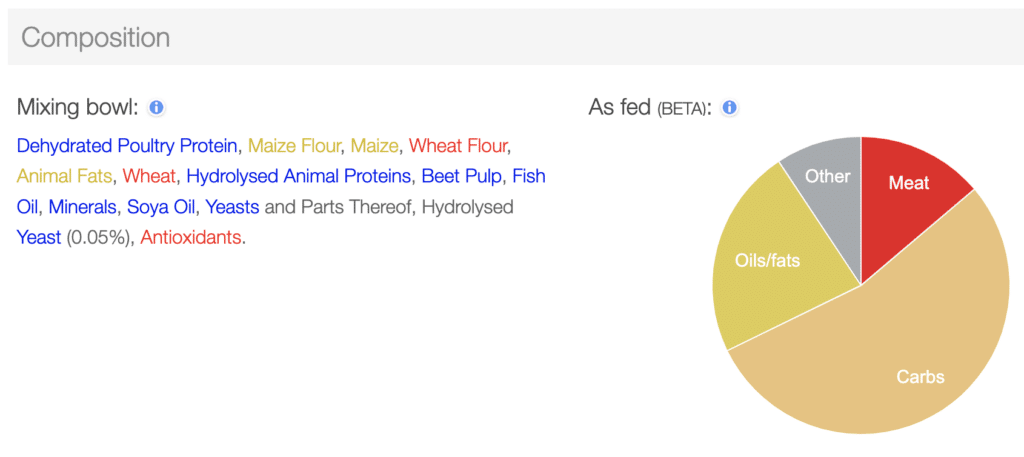
The first one is a very popular brand, and this specific bag of food was the one I was selling the most of when I worked at a pet store. We can see that the first ingredient is from poultry, but we don’t know for sure if it’s chicken or turkey for example. The next 3 ingredients are different types of flour and maize, meaning there is a lot of these in the food. There is also a big chance that there is more flour (when combining these 3) than there is of the first ingredient. But we don’t know for sure since they haven’t written down the percent. There is also a lot of carbs in this food, a little too much if you ask me. And what’s the point of adding maize? The maize is only filling up your dog’s tummy without doing anything good. I prefer ingredients that are actually good for my dogs.
I have had a dog with a bowel disease named IBD, she got very sick if she ate food with corn/flour. If I gave her one kibble with lots of corn/flour in the ingredient list, she could throw up for up to 3 days after. Healthy dogs normally don’t get sick by eating this, but after this experience I don’t give my dogs this type of food, not even as treats.
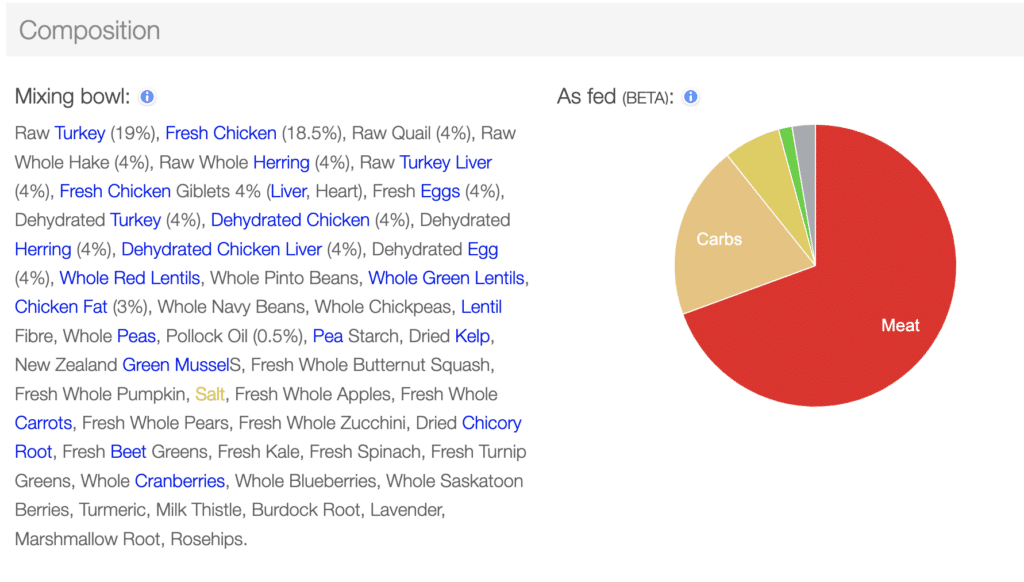
This photo is from a different brand, and as you can see there is much more meat in the food. In the ingredient list you can tell what type of protein they have used. There is also no flour or maize, but vegetables and fruit instead. So a much cleaner ingredient list. The carbs are just under 20%, that’s okay because the carbs are keeping the kibbles together. With no carbs the food would probably turn into crumbs.
If you prefer less processed food for your dog it can be a great alternative to feed them raw food, there are many great pre-made raw foods out there. There are also differences when it comes to pre-made raw food, so I would definitely recommend checking out the ingredient list. Personally I would look for a pre-made food without additives, preservatives and grains.
Have you ever had a look at the ingredient list of your dog’s food? If not, I would recommend that you do.
6. Supplements
When it comes to supplements there are mainly 3 types I use for my dogs at the moment. I have given fish oil for many years, but this year I also started to give both Golden paste and Bone Broth. I can also recommend Glucosamine for joint support, but I don’t use it on my dogs since their dog food already has a good amount of it. Before I started to make Golden paste and Bone broth I was looking at different types of pre-made supplements, but I decided that I wanted the supplements to be as natural as possible. These two are very easy to make, and so far this has been cheaper for me than buying pre-made ones.
Fish oil:
I use fish oil made of white fish. White fish is often a little bit more gentle for the tummy, and this was the only one I could give my IBD dog without her getting sick. My other dogs also got the same oil, because that’s easier. My sheltie Iso has had some problems with her paws being very dry and cracked up. She has always been a very picky eater, and I tried different types of food for her paws with no effect. The white fish oil fixed her paws in only two months. And one thing is the effect you can see, but fish oil also has other benefits you can’t see with your eyes. Fish oil will support the dogs heart, joints, skin and immune systems. I would recommend using a fish oil with both EPA and DHA, these contribute to a normal function of the heart. DHA also contributes to maintaining normal brain function and healthy sight.
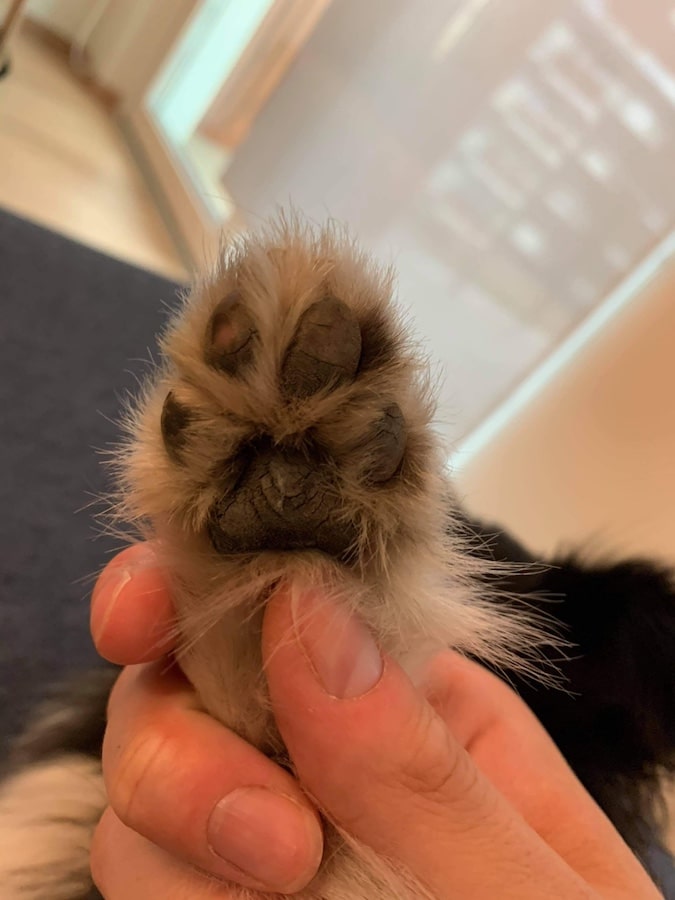
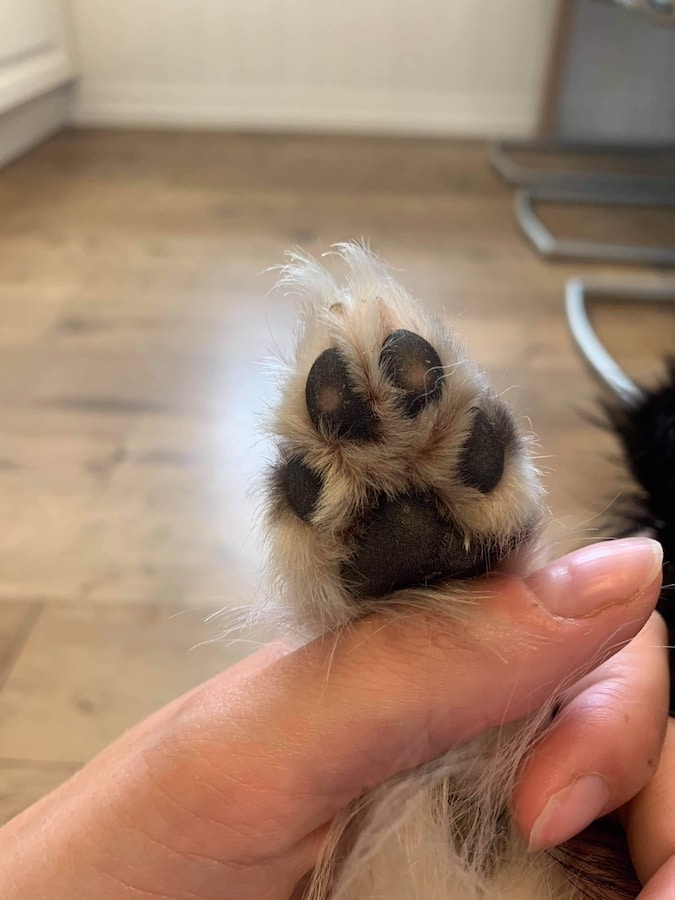
Two months apart between photo 1 and 2.
Bone broth:
Bone broth is a gel-like liquid full of vitamins and minerals, which can provide several benefits for the dog’s immune system and body. It will help support the immune system and detox the liver. Bone broth is an easily digestive source of protein and will also support a healthy gut. It contains a lot of nutrients, such as glucosamine, chondroitin and hyaluronic acid. This will support the production of collagen, which means bone broth contributes to joint support. Bone broth is also super easy to make! I use the recipe from Isabelle’s blog, click HERE if you want to read more about bone broth and for the recipe. I also added some vegetables in my last batch of Bone broth. Even Iso, who is super picky, loved the bone both!
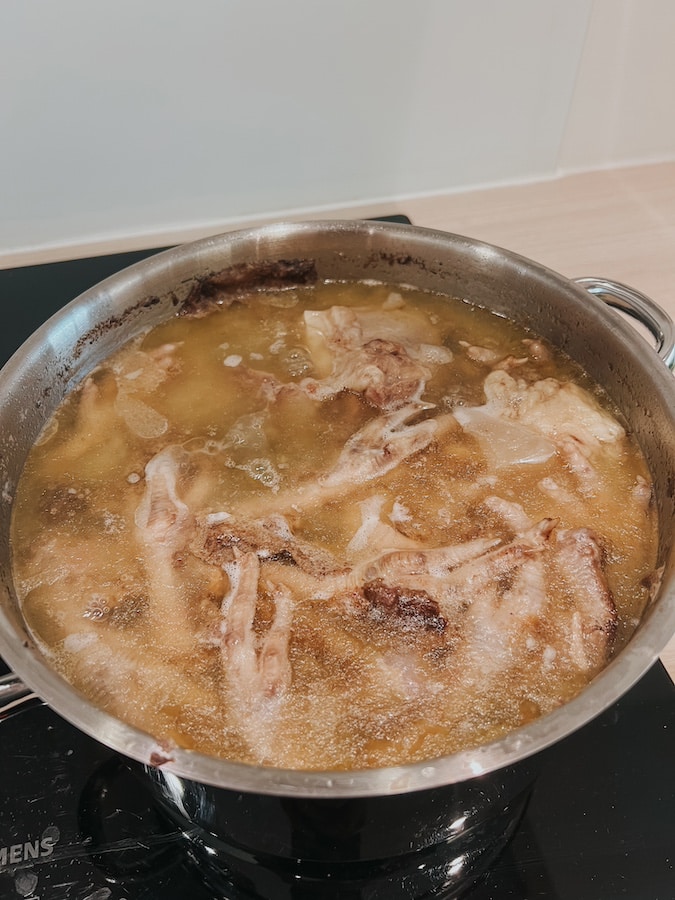
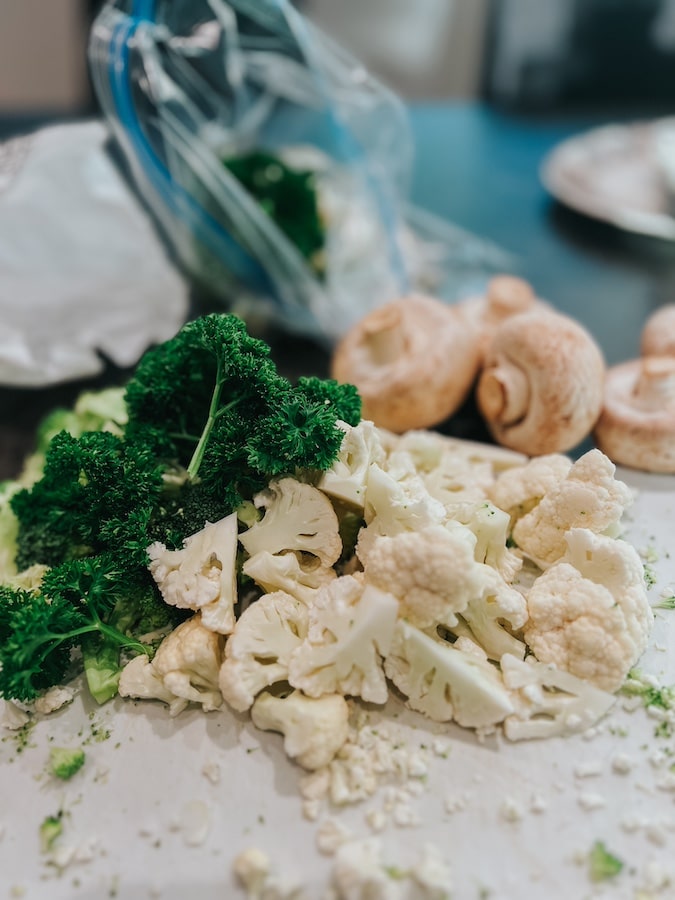
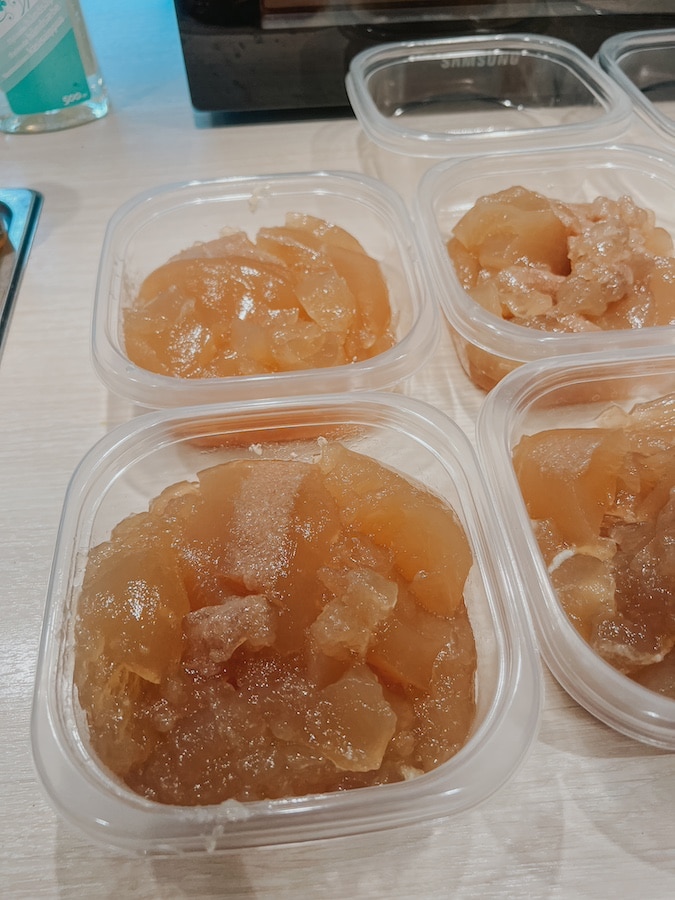
Golden paste:
Golden paste is made from turmeric powder, which can help against arthritis, diabetes, cancer, liver diseases and gastrointestinal issues. Turmeric contains curcumin, which is great for both dogs and humans. Golden paste is antioxidant, anti-inflammatory and anti-bacterial. Golden paste is easy to make and takes about 15-20 minutes to make it. The recipe I used for golden paste is also from Isabelle’s blog, so thank you for sharing! Click HERE for the recipe and more information about golden paste. I put the golden paste in an ice cube tray with small cubes and hearts so there will be portions in the right size ready for the dogs to eat.
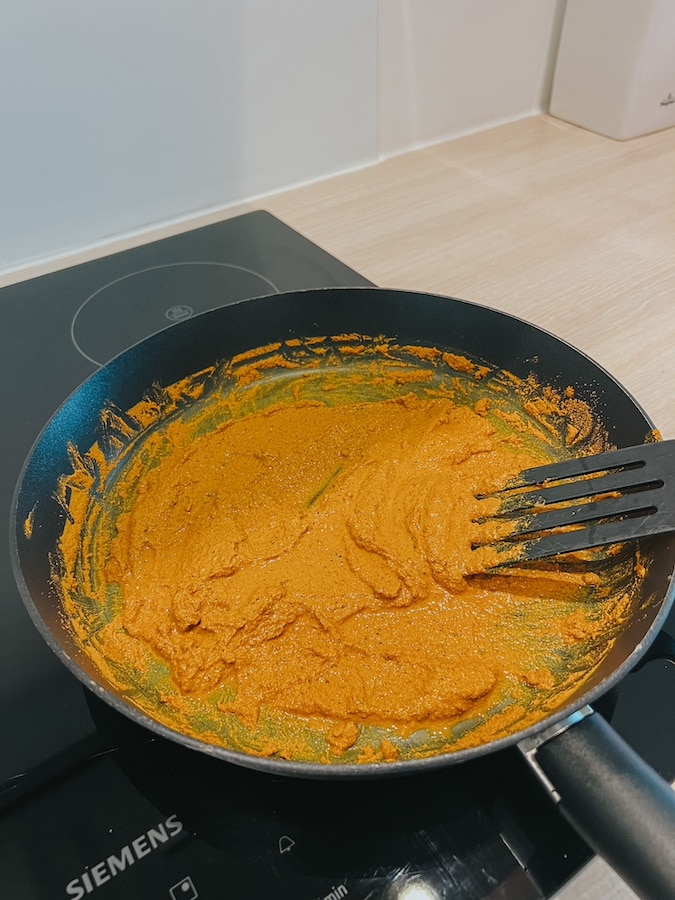
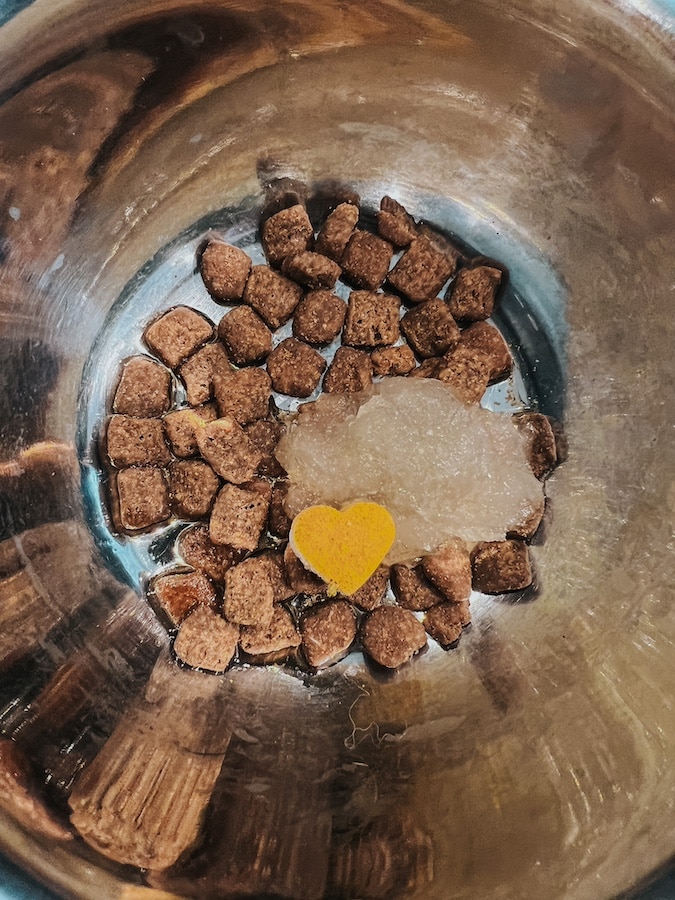
7. Everyday Life
Even though dog sports and training is super fun for both us and the dogs, we have to remember to let our dogs be dogs. I regularly let them run off leash on hikes to let them play and just be dogs. I want my dogs to get the chance to explore, sniff and do other dog things. Everyday life is and will always be the biggest parts of our life together, and I also want my dogs to feel loved and as an important part of our family.
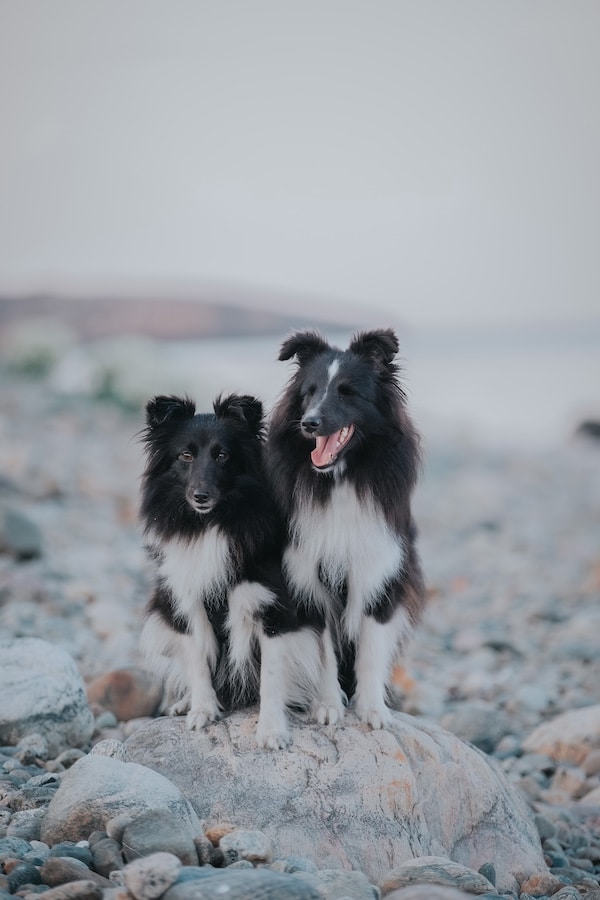
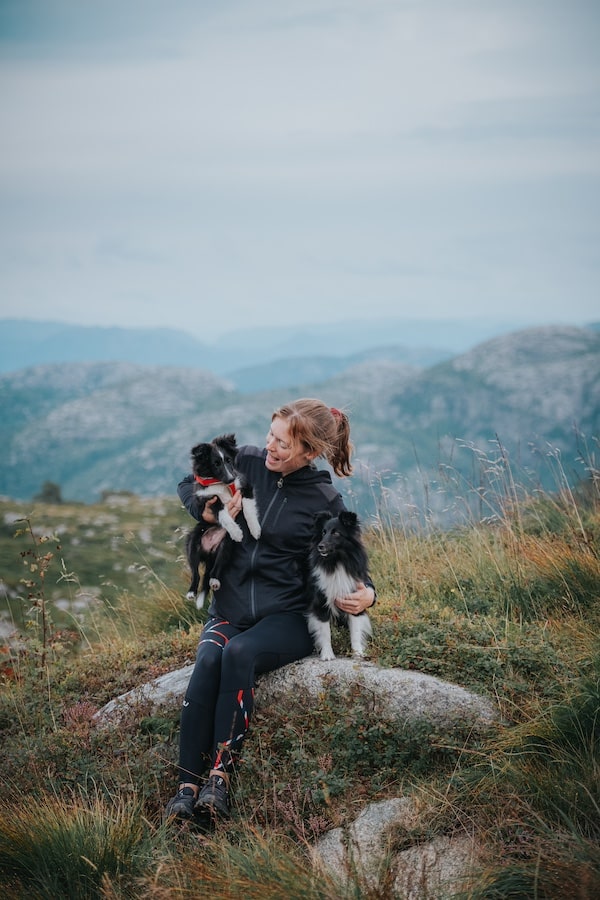
8. Health Tests
I want to know what’s going on in my dog’s body, I want to be sure they are healthy. And in the worst case if something is wrong, i can make adjustments for them to live a better life. When my dogs are between 12 and 18 months I x-ray them at my local Vet, I do photos of hips, elbows and spine (HD, ED and LTV + vertebrae anomalies). And I highly recommend that you buy your next dog from a breeder who also x-rays their dogs and focuses on their dogs’ health. Results from dog shows won’t tell you if the dog is healthy or not on the inside.
I want to show you an example of a HD photo:
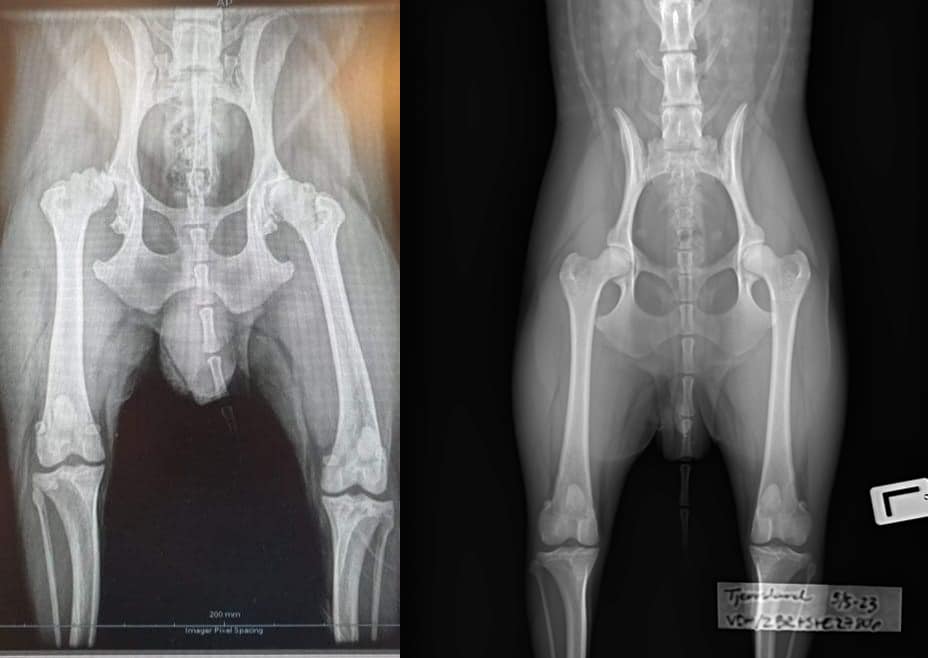
Dog on the left side: HD E/E. Dog on the right: HD A/A. Both dogs are Shetland Sheepdog.
HD E/E is the worst result you can get, and HD A/A is the best. HD B/B means free, but C and D means that the dog has hip dysplasia. The dog on the left was only 5 years old when the owner had to let him go due to pain, he showed symptoms already between 1,5 and 2 years. But not all dogs with HD show symptoms, but that doesn’t mean that they are not in pain. Dogs are often way too good to hide pain, therefore it’s important to x-ray our dogs. If we look at the dog on the right we can see that the sockets are deep, and the hip fits perfectly in the socket. On the left dog the photo speaks for itself…
In Norway we don’t have an official system for LTV/Vertebrae Anomalies (in theory you should get a comment from the Norwegian Kennel Club if they can see LTV on the hip photo, but that isn’t always the case), therefore i sent the photos to incoc.fi in Finland. Incoc saw that my youngest dog was missing a rib, my vet didn’t see it when I asked her about the spine. A missing rib isn’t a big deal, but I have several friends where the vet has said that the spine is clear when the result from Finland says that the dog has LTV. That’s why it’s important to send your photos to someone who can give you an official result, that also applies to hips and elbows for example. Personally I would not trust the result if it says “Free by vet”, because you can’t be 100% sure.
If you want to learn more about LTV you can click HERE. The page is about Rhodesian Ridgebacks, but the information can help you understand more about LTV and there are several photos as examples.
Thank you for reading!
There are a lot of things you can do to prevent injuries and to keep your dog healthy. It’s important to remember that every dog is different, and it’s important to figure out what your dog needs. I hope you found this post useful, and that it inspired you in some way.
Sofie // @Sofietjemsland
